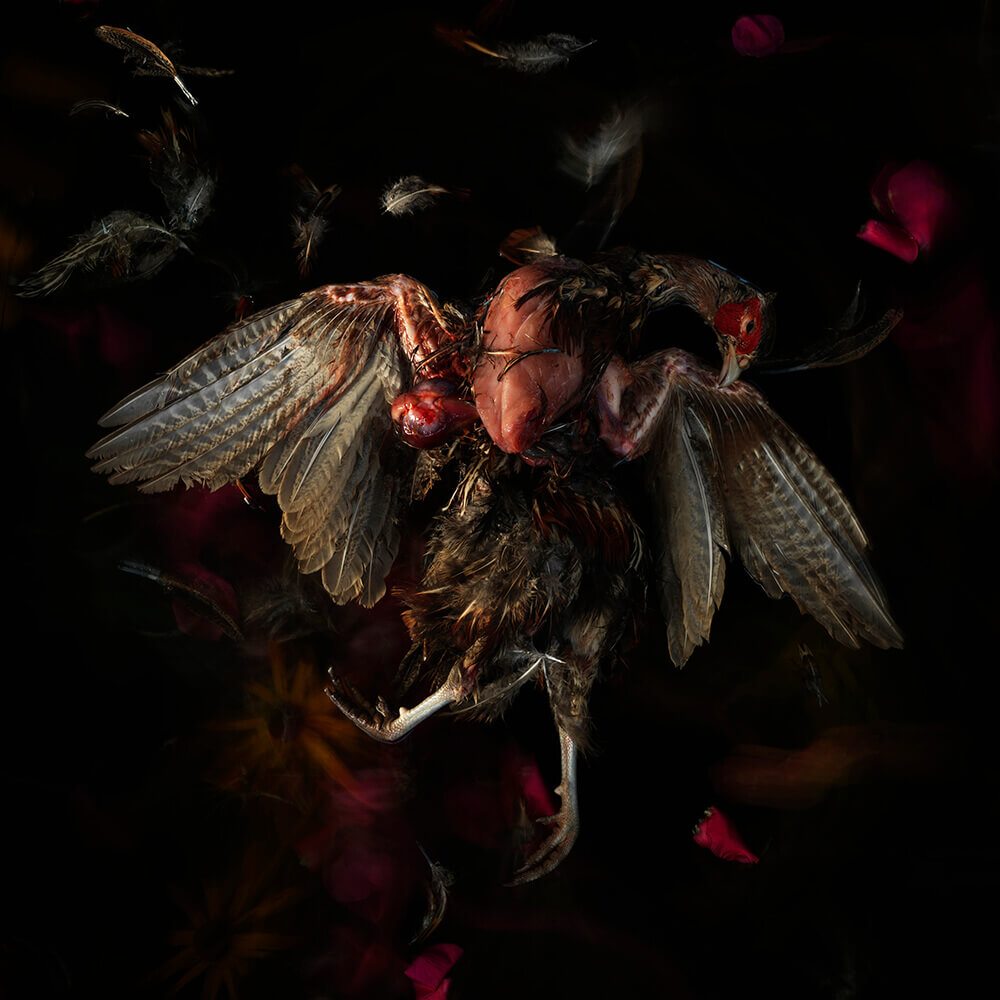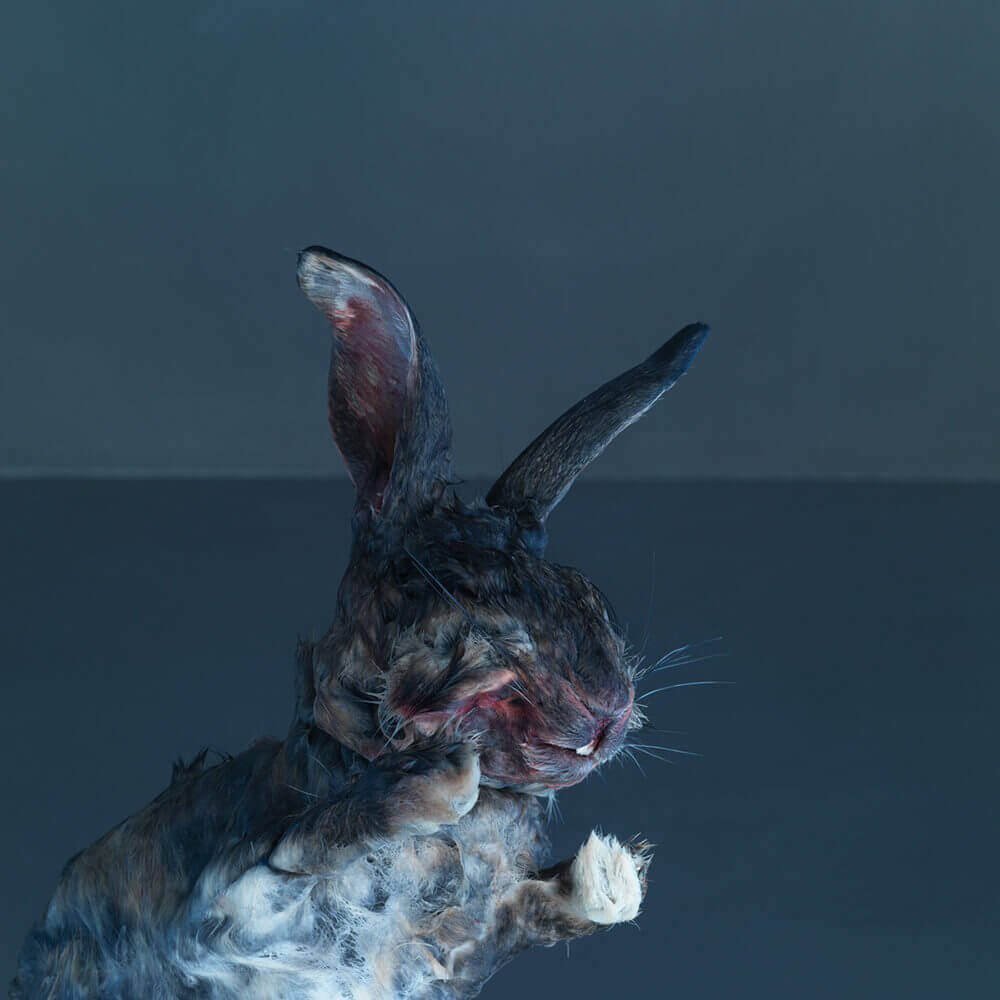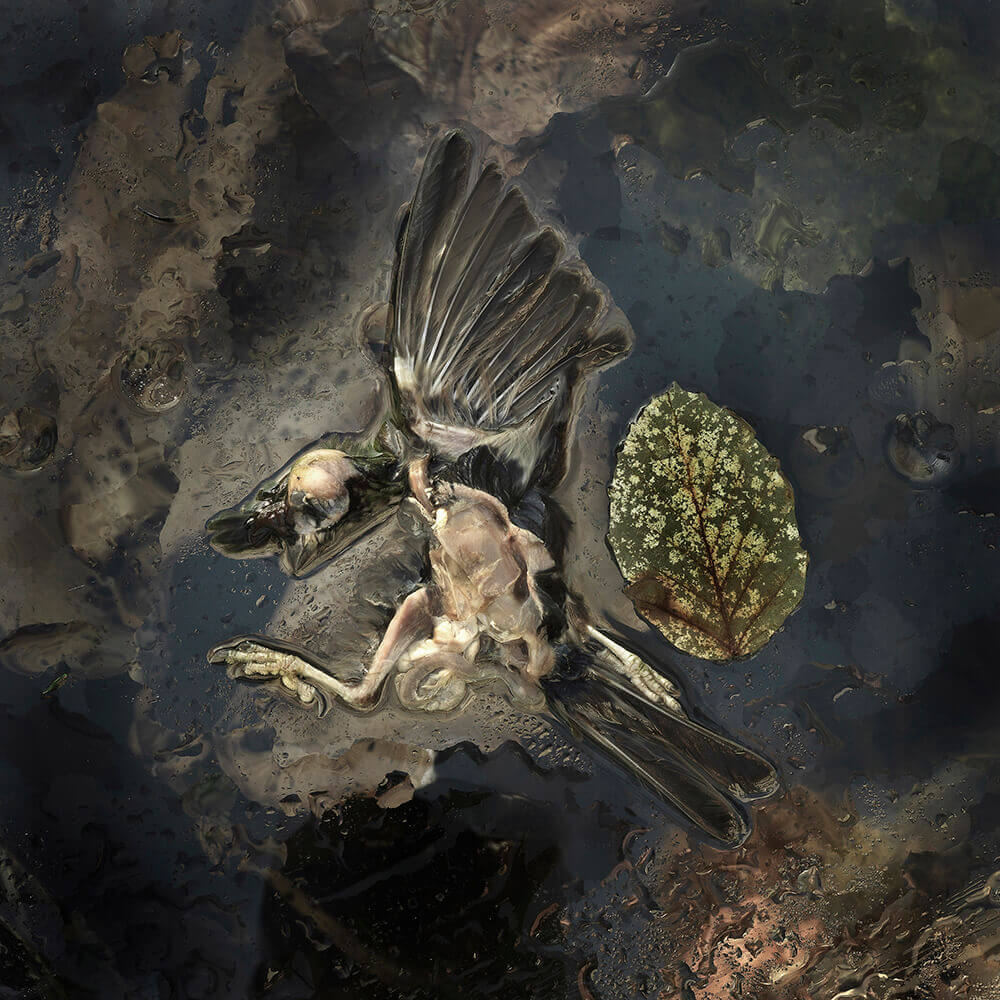INTERVIEW
A Fleeting Life and a Beautiful Death
WITH EINAR SIRA
An interview with Einar Sira
“Post Vitam will stay with me as long as I can continue making photography”
Einar Sira caught our attention back during Life Framer Edition III with his series ‘Post Vitam’. His gorgeous, glassy still lives of dead animals, plants and birds are eye-catching – imbued with gentle detail and harmonious colour palettes – and challenging too; they reflect on life and death, the inexorable decay of all things living, and the fleeting and brutal beauty associated with that.
Sira’s is a project where working process is fundamental – from selection, preparation and arrangement of his props, control of lighting, through to post-processing, paper selection, printing and framing. We thought we’d ask him about his methods, and his responses are illuminating.
‘Post Vitam’ deals with powerful and emotive themes, and so I’m intrigued as to how the project developed. Can you shed some light?
I spent many years doing making photographs only for myself – as a kind of therapy – focusing on small details, mainly of birds.
The project started one Sunday morning – I went out in my garden and found this dead house sparrow. For the next 18 months I was able to follow its decay, taking one or two pictures almost every day. It became a sort of obsession.
Your images are slow and meditative – with a clear attention to color, shadow and placement. Can you talk us through your process? How do you go about building and furnishing your ‘sets’, and how much experimentation is involved in the final outcome?
Almost all my photography is done in a small garden pond. I use mostly natural light and a silver reflector. I have made some glass plates (~1m2) that fit exactly over the pond and I build them up in several layers, like a manual Photoshop. I spend most of the time arranging the objects and waiting for the right light. Recently I have started to use an LED light with a dimmer and this way I can work more precisely. I process the images in Phocus (Hasselblad software) and make small adjustments in Photoshop.



And what about the animals, birds and plants that you work with? I’ve heard that you are now known in your community for your work, and that neighbours will offer you dead things when they find them. With such care for the process in your methods, do this open up an element of spontaneity – that you work with what you are given – or do you have clear ideas of the flora and fauna you want to photograph next?
As the project has become known in my hometown I have had a few strange phone calls… I also have a brother who lives further north in a rural area and he does some collecting for me. Hunters I know about have also been very helpful – and I make “orders” with them constantly. Both the deer and the beaver were been planned works. The others have been fitted in, but I wouldn’t say spontaneously -I see what I get and plan what to do based on that. I have a freezer where I keep the objects in waiting…
I have some “dream objects” that I wait, with specific plans. Living in Norway the flora season is rather short and so I have also started to conserve leaves and plants, just to have something to work on during the winter.
Your care for detail extends to the careful selection of paper and framing. Can you describe how this part of the process works? It’s perhaps an area that many photographers are less attentive, or comfortable with.
I do all the printing myself and have spent a long time getting it right. It is very confusing when you start – so many brands, so many qualities to choose from. I have ended up with Epson Hotpress paper and a big Epson printer. The hotpress comes as “natural” and “bright”» and I use both. I try to print every day that I take photos – for me an image isn’t ready until it’s printed. In that way it is a very slow process – I can’t take many pictures at a time and I like it to be that way.
Printing has become an obsessions for me, and I wouldn’t be comfortable sending files away to be printed by others. I don’t do the framing myself. We are very lucky here in my hometown (Sandnes) – we have a really good local framer who really knows what he’s doing.



You work exclusively in square format. Is there a rationale behind that? An aesthetic choice maybe, or a decision driven by your equipment?
I use digital Hasselblad cameras (H4d and H5dwifi) and have always liked the old square format that Hasselblad (and others) had. Now I plan all my images that way and I really like the format – especially when they are printed big. At recent exhibitions I have made them 80cmx80cm (framed 100cmx100cm) and some 120cmx120cm (framed 140cmx140cm). Having made the decision about the format also saves me some time because it’s already decided… always square.
I’ve read you describe how you were a passionate photographer as a young man, but left your photography dormant for many years while you focused on building your business in engineering. Did you always hold a longing to return to photography, or was it something quite spontaneous? And do you think any of your experience in engineering filters into your work, or do you consider it a case of one chapter closed, and another open?
The years with the engineering company took all my time for many years – there was no time for photography but I was still interested, reading books and magazines. Maybe the engineering work has helped me in the process of being precise, and building up the company taught me that it is important to be patient and try not to give up. I think it also taught me to specialise on a subject. Many photographers do all kind of photography but I think it’s essential to find your own topic/project and stay with it. For me at least this has been the solution.
Do those early images have any bearings on your current work?
It’s hard to say… I guess I was experimenting with too many topics before – I couldn’t decide what I wanted to do with my photography. But I did a lot of darkroom work then and I think that is a good way to learn the basics.



Does growing up and continuing to work in a small Norwegian town have any influence on your work? I suppose it is hard to say, but as an outsider, knowing Norway for its vast landscapes, I wonder if your focus on small, intricate scenes is a reaction to that. I’ve read that you’ve worked in Cuba too, and I imagine your work there might be quite different…
I really think that the nature here influences my work. I live close to the North Sea and get to experience this massive element in all its stages; from strong autumn and winter storms, to calm summer days with no waves. Most of my images include water because the element fascinates me. I have been a swimmer and took a divers certificate as an adult.
Water can be seen as a metaphor for “the river of time” that runs over the underworld but also for beauty, truth and something final. There are also many old Norwegian sayings referring to animals, birds and plants and I have been reading a lot about these cases.
Cuba is a special place for me. I have traveled there many times. It all started when I met some Cuban Photographers in Kristiansund at the Nordic Light International Photo Festival in 2013; among them the director for the Fototeca de Cuba, Nelson Ramirez. I was then invited two years in a row to take part in the festival Fotografico de Noviembre – a big festival in Havana. Since then I have traveled there once a year, mostly in rural areas – doing some photography – but I find it difficult to do “real” work there. Maybe it’s too exotic? I have a project which I have called “anonym”… maybe it will be something in the future.
For a series that deals with the ephemerality of life – the inevitability that all things will slowly decay and disappear – is there an end-point to it, where you see the series as ‘complete’, or is it inevitable that you will continue to work on the series for years to come, the cycle always moving onwards?
I think Post Vitam will stay with me as long as I can continue making photography – it continues to get more and more interesting for me, especially the link to the old Norwegian sayings and mythology, and studying this might give the project another dimension.
All images © Einar Sira
See more at www.sira.no
